Make the best use of Scientific Research and information from our 700+ peer reviewed, Open Access Journals that operates with the help of 50,000+ Editorial Board Members and esteemed reviewers and 1000+ Scientific associations in Medical, Clinical, Pharmaceutical, Engineering, Technology and Management Fields.
Meet Inspiring Speakers and Experts at our 3000+ Global Conferenceseries Events with over 600+ Conferences, 1200+ Symposiums and 1200+ Workshops on Medical, Pharma, Engineering, Science, Technology and Business
Case Report Open Access
Glossopharyngeal Neuralgia: Case Report
| Sergio Neto1,*, Kleber Duarte2, Guilherme Alves Lepski2, Leonardo Moura1, Nilton Caetano da Rosa3 and Manoel Jacobsen Teixeira1,2 | |
| 1Division of Neurosurgery, University of Sao Paulo School of Medicine, Sao Paulo, Brazil | |
| 2Division Functional Neurosurgery, University of São Paulo School of Medicine, São Paulo, Brazil | |
| 3Division of Surgical Oncology, International Research Center, A.C. Camargo Cancer Center, São Paulo, Brazil | |
| Corresponding Author : | Neto S, Division of Neurosurgery University of Sao Paulo School of Medicine. Sao Paulo Brazil. Address: Dr. Enéas de Carvalho Aguiar Street 255-5th Floor, Zipcode: 05403-000-São Paulo. Brazil Tel: 55 11 3091-3116 E-mail: sgsnnc@gmail.com |
| Received: August 18, 2015 Accepted: October 27, 2015 Published: October 30, 2015 | |
| Citation: Neto S, Duarte K, Lepski GA, Moura L, da Rosa NC, et al. (2015) Glossopharyngeal Neuralgia: Case Report. J Pain Relief 4:205. doi:10.4172/21670846.1000205 | |
| Copyright: © 2015 Neto S, et al. This is an open-access article distributed under the terms of the Creative Commons Attribution License, which permits unrestricted use, distribution, and reproduction in any medium, provided the original author and source are credited. | |
| Related article at Pubmed, Scholar Google | |
Visit for more related articles at Journal of Pain & Relief
Abstract
Glossopharyngeal neuralgia (GPN) is an unusual cause of facial pain, corresponding to approximately 0.2-1.3%. Patients usually presents with facial pain associated with daily life activities (cough, swallow) and in severe cases with syncop. Epidemiology of the pathology demonstrates controversy about the predominance of the male, being consensus from patients over 50 years. We present a case report of a 51 patient diagnosed and treats for this rare disease with good outcome.
| Keywords |
| Glossopharyngeal neuralgia; Pain; Headache |
| Abbreviations |
| GPN: Glossopharyngeal Neuralgia; GKS: Gamma Knife Surgery; MRI: Magnetic Ressonance Imaging; CT: Computarized Tomography |
| Introduction |
| Glossopharyngeal neuralgia (GPN) is an unusual cause of facial pain, corresponding to approximately 0.2-1.3% of patients with facial pain [1]. The first clinical description was assigned to weisenberg 1910 [2]. The practice of patients is usually sudden affecting the glossopharyngeal nerve path, characterized by pain triggered by swallowing, chewing, coughing, talking, and may or not be associated with syncop frames/ cardiorespiratory stop in rare cases [3,4]. The clinical or surgical treatment options may include the use of anticonvulsants and in severe or selected cases neurovascular decompression or Gamma Knife surgery [5-8]. |
| Case Report |
| 51-year-old male with pain in shock of sudden onset is 8 months of pain in neck region with irradiation to the region of hemiface right to Franca worsens when swallowing and chewing. Sick said several paroxysms, having 1 frequency crisis every 3 days. After investigation in another service with trigeminal neuralgia, chance of requested the evaluation team. In the first assessment the patient was in use of Gabapentin 900 mg/d with inadequate control of paroxysms. Neurological examination: alert and oriented gear without changes and without strength deficits and/or sensitivity of note the same featured pain swallowing and spontaneous cough. Right Gag Reflex abolished without deviation of the uvula. Magnetic resonance imaging illustrated a great right neurovascular conflict between posteroinferior Cerebellar artery with glossopharyngeal nerve (Figures 1 and 2). |
| The patient underwent a retrossigmoid craniotomy and neurovascular decompression of glossopharyngeal nerve, having in the first post-operative presented fully symptomatic improvement, having received high in the 4th post-operative without complaints and medications until 1st year outpatient follow up. |
| Discussion |
| Glossopharyngeal neuralgia (GPN) is an unusual cause of facial pain, corresponding to approximately 0.2-1.3% of patients with facial pain or a hundred times less frequent when compared with trigeminal neuralgia [1]. |
| The first description of the clinic was assigned to Weisenberg 1910 in a patient with pontocerebelar angle tumor diagnosis and Harris in 1926 the name of glossopharyngeal neuralgia [2,9] |
| The etiology of trigeminal neuralgia in most cases is primary/ idiopathic or secondary to neurovascular compression (posteroinferior Cerebellar arteries or branches of verteral arteries), skull base tumors or cerebellar point angle tumors [10]. Epidemiology of the pathology demonstrates controversy about the predominance of the male, being consensus from patients over 50 years [10]. |
| The clinic of patients is usually sudden affecting the glossopharyngeal nerve path, characterized by pain (unilateral electric shock type, abrupt, and located in the ear, at the base of the tongue, tonsillar fossa, or under the angle of the mandible) triggered by swallowing, chewing, coughing, talking, and may or not be associated with sincopais frames/ cardiorespiratory stop in rare cases [3,4] |
| The investigation of patients with neuralgia includes realization of head CT and/or Brain MRI in order to highlight tumors or vascular compressions as etiology [11,12]. |
| The Clinical treatment includes the use of Anticonvulsants (e.g. Carbamazepine, Oxcarbazepine, Phenytoin) in doses appropriate for symptomatic control and |
| The surgical treatment (neurovascular decompression) has proved higher results when compared with clinical management, despite all known complications associated with the procedure [5,6,12] |
| Recently, Xiong NX,2015 reported good results in 3 patients with intractable pain for GPN using Gamma Knife Surgery (GKS) [8]. |
| The option of positioning (horizontal dorsal cephalic rotation decubito) craniotomy and retrossigmoid chosen by the team was the infratentorial side by supracerebelar allow proper exposure and when associated with 15-20o tilt the surgical table allows a wider exposure of the pontocebelar angle elements without the use of retractors, thus decreasing the chance of Cerebellar lesion by mixing pad (Figures 3-5) [7]. |
References
- Resnick DK, Jannetta PJ, Bissonnette D, Jho HD, Lanzino G (1995) Microvascular decompression for glossopharyngeal neuralgia. below Neurosurgery 36: 64-68.
- Weisenberg TH (1910) Cerebellopontile tumor diagnosed in adults for six years ICT dolourex: The symptoms of irritation of the 9th and 12th nerves. JAMA 54:1600-1604
- Johnston RT, Redding VJ (1990) Glossopharyngeal neuralgia associated with cardiac syncope: long term treatment with permanent pacing and carbamazepine. below Br Heart J 64: 403-405.
- Katusic S, Williams DB, Beard CM, Bergstralh E, Kurland LT (1991) Incidence and clinical features of glossopharyngeal neuralgia, Rochester, Minnesota, 1945-1984. Neuroepidemiology 10: 266-275.
- Rey-Dios R, Cohen-Gadol AA (2013) Current Neurosurgical Management of Glossopharyngeal Neuralgia and Technical Nuances for Microvascular Decompression Surgery. Neurosurg Focus 34: E8
- Rushton JG, Stevens JC, Miller RH (1981) Glossopharyngeal (vagoglossopharyngeal) neuralgia: a study of 217 cases. below Arch Neurol 38: 201-205.
- Hitotsumatsu T, Matsushima T, Inoue T (2003) Microvascular decompression for treatment of trigeminal neuralgia, hemifacial spasm and glossopharyngeal neuralgia: three, surgical approach variations: technical note.Neurosurgery 53: 1436-1443
- Xiong NX, Tan D, Fu P, Zhao HY (2015) Gamma Knife Radiosurgery for Glossopharyngeal Neuralgia by Targeting the Medial Cisternal Segment of the Glossopharyngeal Nerve: Report of 3 Cases. below Stereotact Funct Neurosurg 93: 292-296.
- Harris W (1926) Neuritis and neuralgia. New York: Oxford University Press.
- Jannetta PJ (1981) Cranial nerve vascular compression syndromes (other than tic douloureux and hemifacial spasm). below Clin Neurosurg 28: 445-456.
- Resnick DK, Jannetta PJ, Bissonnette D, Jho HD, Lanzino G (1995) Microvascular decompression for glossopharyngeal neuralgia. below Neurosurgery 36: 64-68.
- Patel A, Kassam A, Horowitz M, Chang YF (2002) Microvascular decompression in the management of glossopharyngeal neuralgia: analysis of 217 cases. below Neurosurgery 50: 705-710.
Figures at a glance
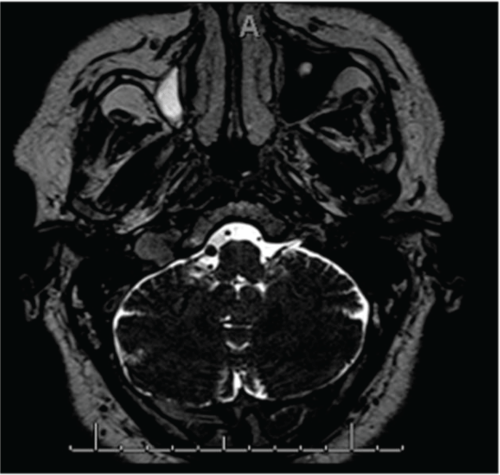 |
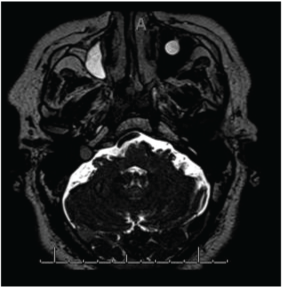 |
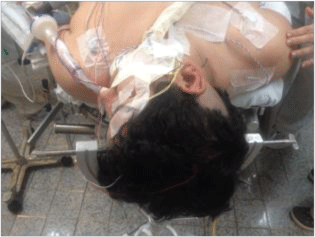 |
| Figure 1A | Figure 1B | Figure 2 |
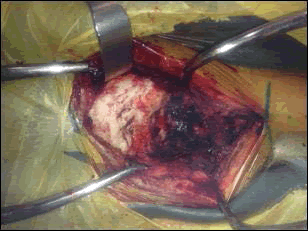 |
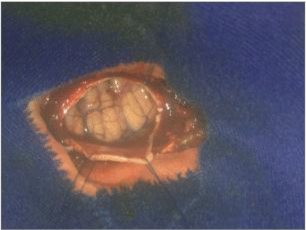 |
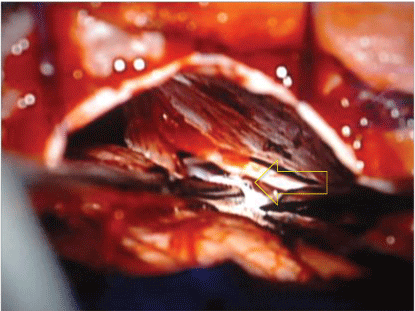 |
| Figure 3 | Figure 4 | Figure 5 |
Post your comment
Relevant Topics
- Acupuncture
- Acute Pain
- Analgesics
- Anesthesia
- Arthroscopy
- Chronic Back Pain
- Chronic Pain
- Hypnosis
- Low Back Pain
- Meditation
- Musculoskeletal pain
- Natural Pain Relievers
- Nociceptive Pain
- Opioid
- Orthopedics
- Pain and Mental Health
- Pain killer drugs
- Pain Mechanisms and Pathophysiology
- Pain Medication
- Pain Medicine
- Pain Relief and Traditional Medicine
- Pain Sensation
- Pain Tolerance
- Post-Operative Pain
- Reaction to Pain
Recommended Journals
Article Tools
Article Usage
- Total views: 11327
- [From(publication date):
November-2015 - Jul 03, 2025] - Breakdown by view type
- HTML page views : 10348
- PDF downloads : 979
